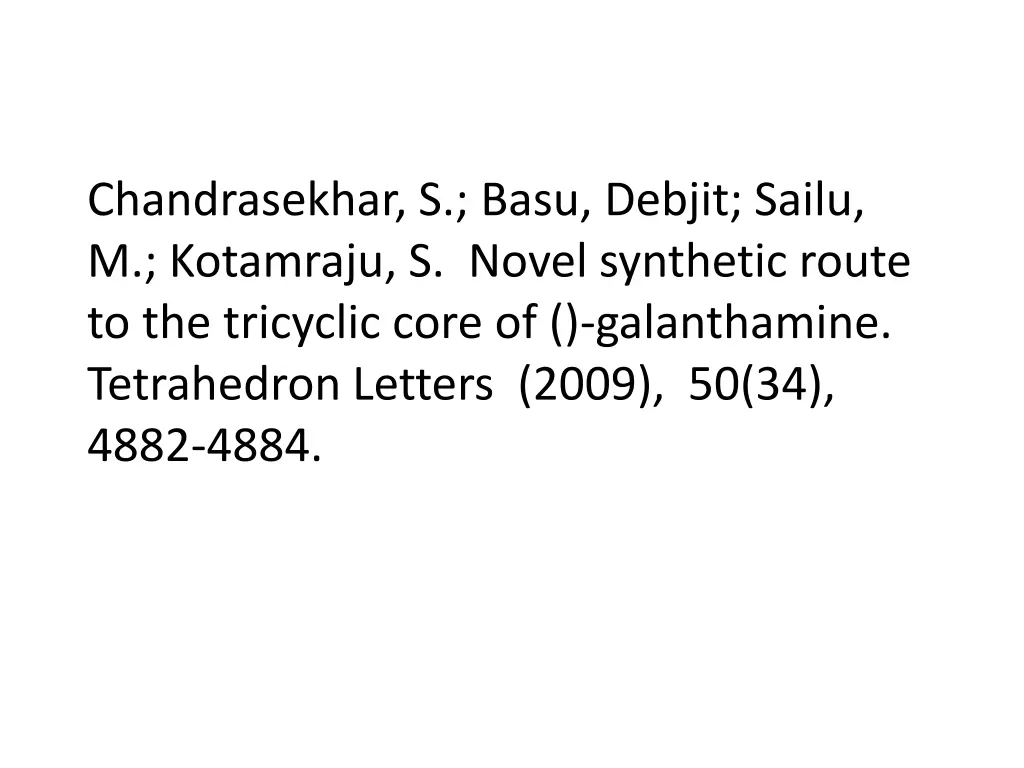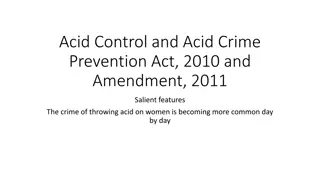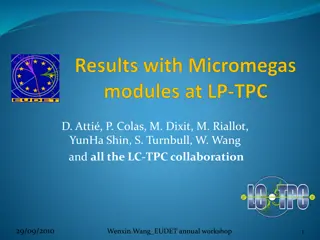
Chemistry Insights: Synthesis, Rearrangements, and Acids
Explore a novel synthetic route to the tricyclic core of (-)-galanthamine, learn about the Claisen Rearrangement, sigmatropic rearrangements, and the properties of various acids such as phenol and carbonic acid. Discover the significance of pKa values, understand the steric hindrance of bases like Diisopropylethylamine (DIPEA), and grasp the importance of compounds like Methoxymethyl (MOM) and 2,6-Lutidine in organic chemistry.
Download Presentation

Please find below an Image/Link to download the presentation.
The content on the website is provided AS IS for your information and personal use only. It may not be sold, licensed, or shared on other websites without obtaining consent from the author. If you encounter any issues during the download, it is possible that the publisher has removed the file from their server.
You are allowed to download the files provided on this website for personal or commercial use, subject to the condition that they are used lawfully. All files are the property of their respective owners.
The content on the website is provided AS IS for your information and personal use only. It may not be sold, licensed, or shared on other websites without obtaining consent from the author.
E N D
Presentation Transcript
Chandrasekhar, S.; Basu, Debjit; Sailu, M.; Kotamraju, S. Novel synthetic route to the tricyclic core of ()-galanthamine. Tetrahedron Letters (2009), 50(34), 4882-4884.
pKa phenol = 9.9 pKa2 of carbonic acid = 10.33
The Claisen Rearrangment is a [3,3] sigmatropic rearrangement Aromatic Claisen Rearrangement Cope Rearrangement is related
DIPEA = Diisopropylethylamine (Hunigs Base). This base is more sterically hindered, and thus less nucleophilic, than triethylamine. pKa of the conjugate acid of Hunig s base = 11.0 MOM = Methoxymethyl MOMCl = H3C-O-CH2-Cl
2,6-Lutidine = pKa conjugate acid of 2,6-lutidine = 6.7
pKa hydroxylamine hydrochloride = 6 pKa conjugate acid of pyridine = 5.2 pKa conjugate acid of triethylamine = 10.6
pKa acetonitrile = 25 pKa phenylacetonitrile = 22 DMPU = Dimethylpropyleneurea = solvent to replace HMPA, a carcinogen LDA = lithium diisopropylamide pKa of diisopropylamine (conjugate acid of LDA) = 36
DPPA = diphenylphosphoryl azide = DBU = Diazabicycloundecene = Conjugate acid of DBU pKa = 13.2






















